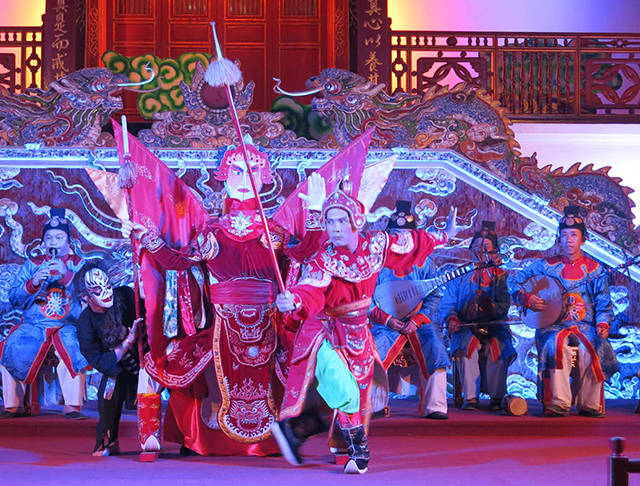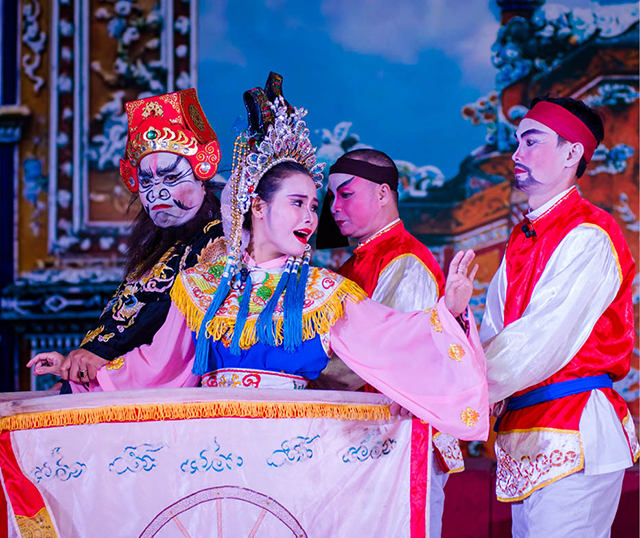
Data about tuong Hue will be kept in a scientific and systematic way. Photo: Minh Hien
Risk of being lost
Used to thrive in the past, for many years now, tuong Hue has lacked the audience due to the development of various contemporary forms of art. Its successors are numbered too, and tuong Hue is on the verge of being lost.
“The society is trying to preserve the art of tuong, but unfortunately both the performing environment and the audience are limited. Theatres are trying to conserve it; artists working hard to enter competitions, but they find it difficult to introduce it to the public as widely as other art forms which better suits the modern age. That makes this art form gradually fade,” said Mrs. Le Mai Phuong, Head of the Applied Research Department of Hue Traditional Royal Theater of Art.

The play Phung nghi dinh. Photo: DANG TUYEN
For many years, Hue Traditional Royal Theatre of Art has remade many plays such as: Son hau, Nguyen Co hoa cao, Ngon lua hong son, Quan phuong tap khanh, etc. as well as carried out many researches on tuong.
However, the data about tuong Hue are kept here and there by artisans in various ways: in the computer, as hard copies and books, etc. If they are not archived in a scientific way, the loss of tuong is unavoidable.
Given the truth that the number of tuong artisans is declining over time, building the database for tuong is urgent with the aim of archiving the available documents in a systematic way, at the same time, collecting additional documents from the community.

The play Tu tuong dai khanh. Photo: DANG TUYEN
“At present, we have many ways to preserve tuong, but since the intangible heritage of tuong is what have been created and accumulated through generations, it needs to be preserved in a scientific way so that it will last long and be passed from generation to generation,” stressed Bach Hac, People’s Artist, Director of Hue Traditional Royal Theatre of Art.
Keeping it for the future
After successfully building the database of court music, Hue Traditional Royal Theatre of Art continues with the provincial project of building the database for tuong Hue funded by Hue Monuments Conservation Center and Bureau of Science and Technology. Artists, artisans and art lovers are very happy because this is an opportunity to conserve tuong in a long and systematic way for the former capital city.
Starting with building the outline more than one year ago, the research team has taken initial steps such as preparing questionnaires, carrying out surveys, searching for documents, writing overviews, etc. The next steps will be going on field trips, meeting with artists and artisans and those who used to perform or watch tuong to collect and record information, then doing the evaluation, comparison and contrast. It often takes from one to three years to complete.
Building the database for tuong Hue is meeting with some difficulties because talented professionals and royal artisans have passed away, leaving very few successors. However, the advantage is that Hue Traditional Royal Theater of Art has so far conducted many researches on tuong and many artisans and artists who are working for the theatre possess many ancient pieces of Tuong.
By Minh Hien